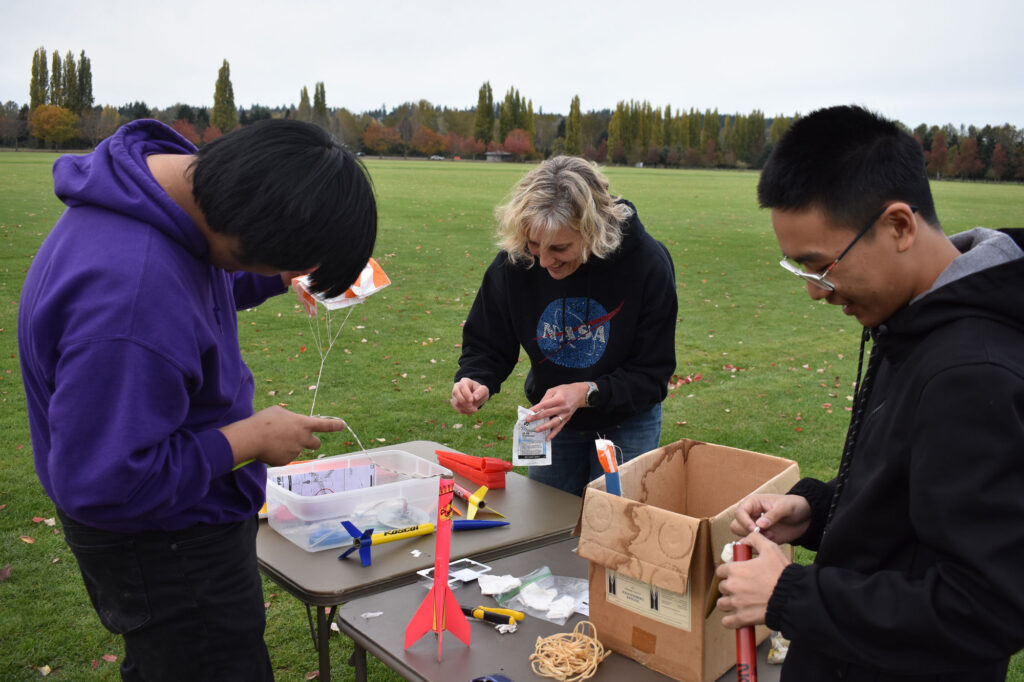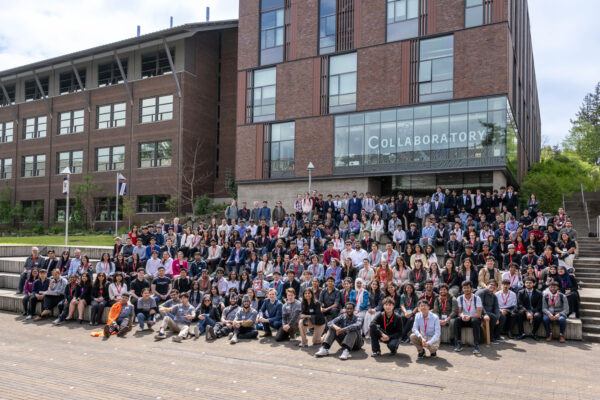From time immemorial, humans have gazed up at the sky and wondered about the nature of the objects seen above. Some people look at the night sky out of sheer curiosity. Yet others find comfort in the reminder of their small place in the vast universe.
And while everyone looks at the sky, very few ever make the journey above Earth’s atmosphere. Dorothy Metcalf-Lindenburger, a lecturer at the University of Washington Bothell’s School of Interdisciplinary Arts & Sciences, is among those who have.
She stumbled upon the opportunity in 2004 after googling “how do astronauts use the restroom in space,” a question posed by one of her students at Hudson’s Bay High School in Vancouver, Washington. What she found was much more intriguing than how astronauts handle this part of life in space: She learned that NASA wanted to send math and science teachers to space.
“I knew I had to do it,” she said. “I mean, how could I tell my students to follow their dreams if I wasn’t willing to?”
Six years later, on a calm morning in April, she followed her dream to the Space Shuttle Discovery launch pad. “It was pretty incredible,” she said. “I was in third grade when Sally Ride became the first female to fly in space so to then be able to fly on a space shuttle myself years later just seemed surreal.”
I was in third grade when Sally Ride became the first female to fly in space so to then be able to fly on a space shuttle myself years later just seemed surreal.
Dottie Metcalf-Lindenberger
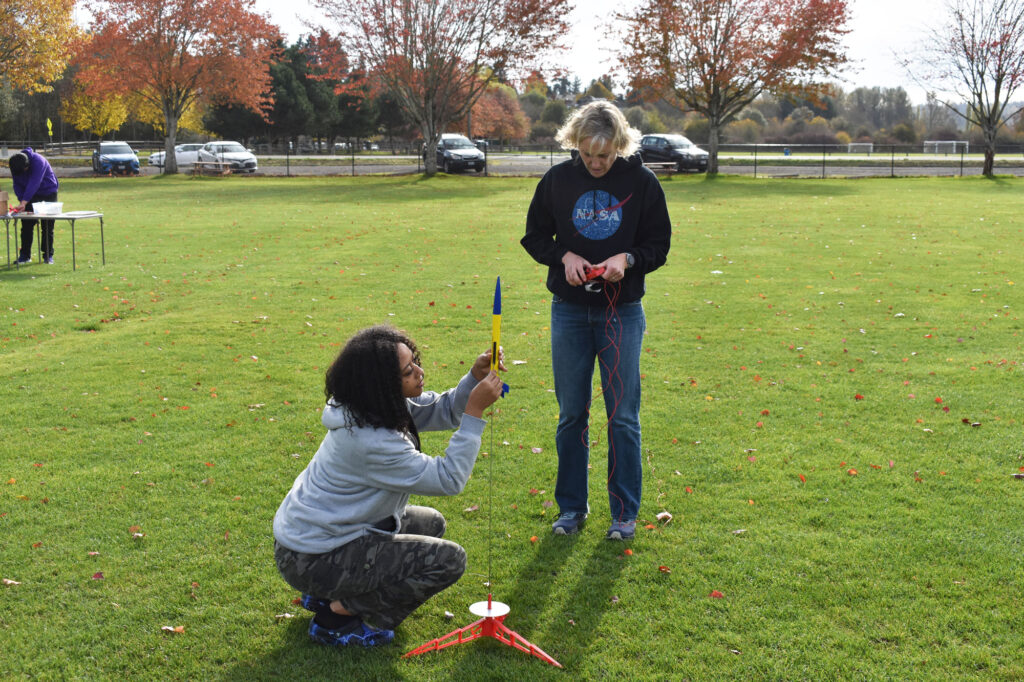
New explorations
Now, as the 53rd woman and one of only four educator astronauts to fly in space, Metcalf-Lindenburger has a perspective that only those who’ve left Earth can share — and she is doing so in a new Discovery Core class titled, Launching STEM: An Exploration of Earth, Space and Everything In-Between.
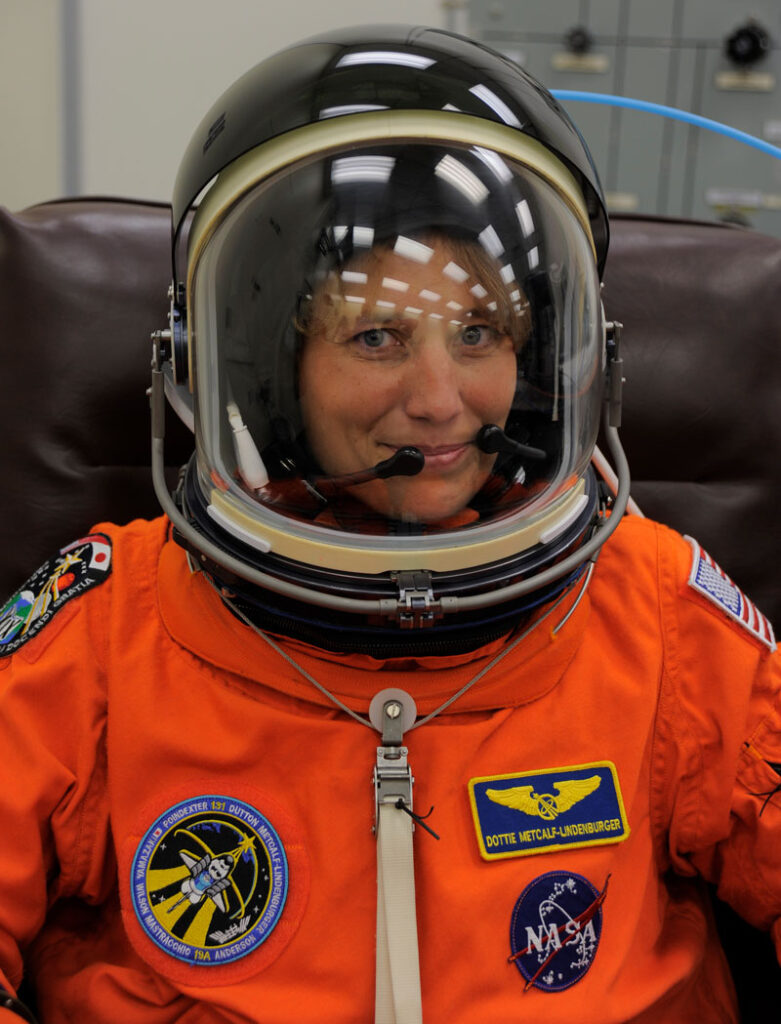
“A class focused on space can appeal to a wide range of students given its interdisciplinary nature,” Metcalf-Lindenburger said. “After all, it has ties to science, policy, art and writing.”
Taking advantage of the broad scope, she included in the course a research assignment designed to help students develop the ability to delve into almost any space-related topic. “It just had to relate to innovation, human health, earth observations or policy,” she said.
For example, Metcalf-Lindenburger explained, space exploration can support experiments that might make better vaccines. “Bacteria and viruses grow more rapidly in space, and that can dramatically reduce the time-to-vaccine discovery.”
She cited the space research that yielded the Salmonella vaccine in 2009. “The rapid growth allowed the scientists to identify the genes responsible for infection, remove them and create a weaker strain for a vaccine,” she said.
Innovations in space
The list of space-related innovations is seemingly endless. If you have taken a selfie, you have benefited from space exploration. The standard technology in every smartphone camera got its start in the 1990s when NASA’s Jet Propulsion Lab built miniature imaging systems to take high-definition pictures of outer space.
Other space-related innovations include products ranging from MRIs and ear thermometers to GPS satellite navigation and scratch-resistant, UV protection sunglasses.
Korey Ziss, a first-year student planning to major in Business, decided to research the intersection of space and innovation. He looked into the role of lithium-ion batteries in space, summarizing his research in a paper that cites at least one scholarly article.
The batteries were developed in the 1970s in response to the oil crisis. Because they are based on lithium ions moving between anodes and cathodes, rather than chemical reactions, they can be charged hundreds of times before degrading. “They have completely replaced prior battery technologies in space travel,” Ziss said. “They are even used to power International Space Station spacesuits.”
According to Ziss, the batteries are ideal for space travel because they offer higher reliability, less likelihood of self-discharge and reduced sensitivity to outside temperatures.
“The project has been great,” Ziss said. “I never thought batteries would be that interesting!”
First-year student Jeffery Pan said he also appreciated the exploratory nature of the Discovery Core class, which aims to help new students transition to academic life and explore possible majors to pursue.
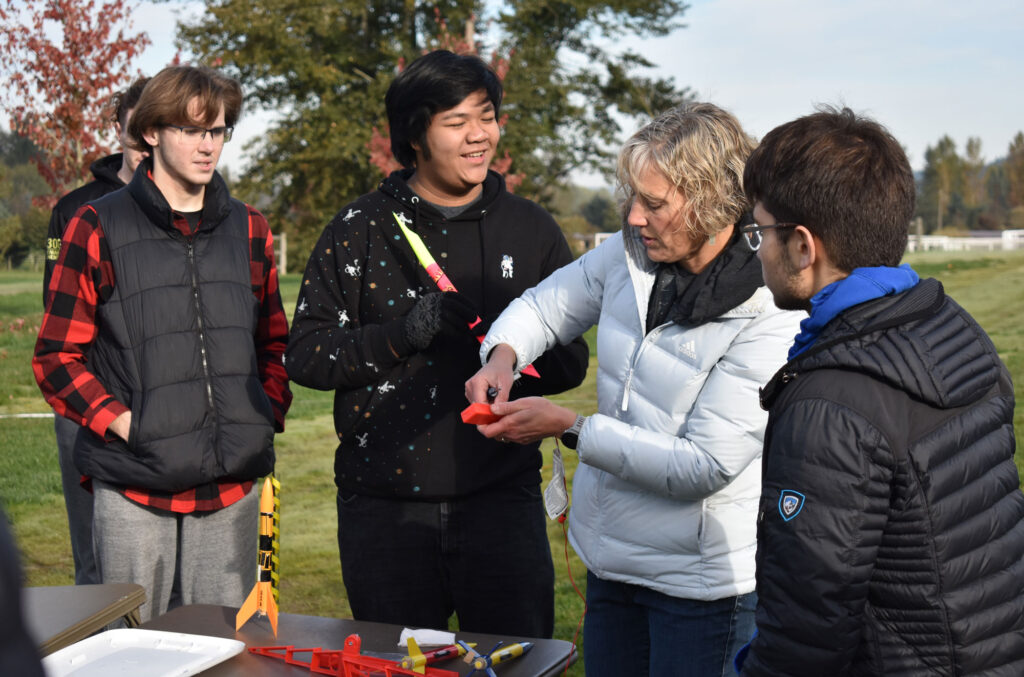
Past informs present
“This course with Dottie is kind of a sigh of relief. You can stretch out a little more and not just stuff your brain and study for hours a day,” Pan said. “You can have your curiosity and sate it, and Dottie really helps with that. Her enthusiasm bolsters us.
“I like her because she’s down to Earth, even though she’s been up in space.”
In addition to looking at the modern advances that have arisen from space travel, the students also reflected on human history before space travel began.
Over the course of the quarter, students were asked to create a sky journal by recording observations of one object such as the Earth’s moon, the sun or a constellation. This was done outside of class and did not require the use of any tools or equipment. “Records dating back to 7th century BC indicate that this practice of observation led to the creation of maps, calendars and the measurement of time,” Metcalf-Lindenburger said.
Stonehenge in England, for example, is one of the most famous examples of how humans in the far past looked at the night sky to better understand the world. “Stonehenge is a series of pits, mounds and stones that date as far back as 5,000 BC,” Metcalf-Lindenburger said. “The famous sarsen stones, which stand above the landscape in a circle, were erected around 2,500 BC. On the summer solstice, the sun is framed between the sarsens as it rises directly above the Heel Stone. Six months later on the winter solstice, the sun sets opposite the Heel Stone and appears in a narrow gap between the upright stones of the Great Trilithon.
“Uncovering this phenomenon helped archaeologists understand that Stonehenge was likely used as a sort of astronomical calendar, helping people keep track of important dates such as solstices and equinoxes.”
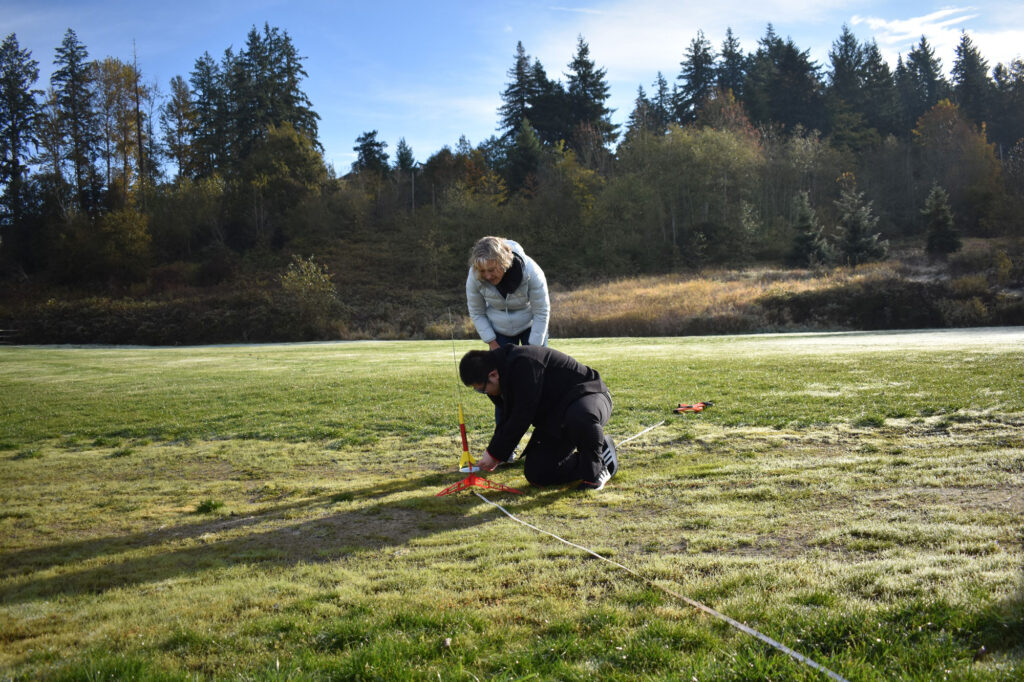
Sky-rocketing success
Students in the class didn’t just read about rockets and space travel. With their educator astronaut leading the way, they also got to witness it firsthand by sending their own rockets into the sky.
In October, the class gathered at 60 Acres Park in Redmond, Washington, to launch model rockets. In a trial run beforehand, the students learned safety protocols, how to pack the parachutes and how to install the various components needed to launch.
Unfortunately, due to cold temperatures and some technical difficulties, the initial launch was unsuccessful. The students learned valuable lessons, however, from the trial-and-error process and from a launch-failure analysis to determine what went wrong — just as engineers do in real-life rocket testing, Metcalf-Lindenburger said.
In a second attempt later that same week, several students were able to successfully launch rockets in a smaller group setting.
“To finally see the rockets launch was really satisfying. It’s something I’ve always wanted to do, and this class is just the perfect opportunity for me to get an introduction to these sorts of models,” said Connor Carinio, another first-year student. “It’s been a very surprising experience. I didn’t expect to meet somebody like Dottie — a real astronaut — in my life.”
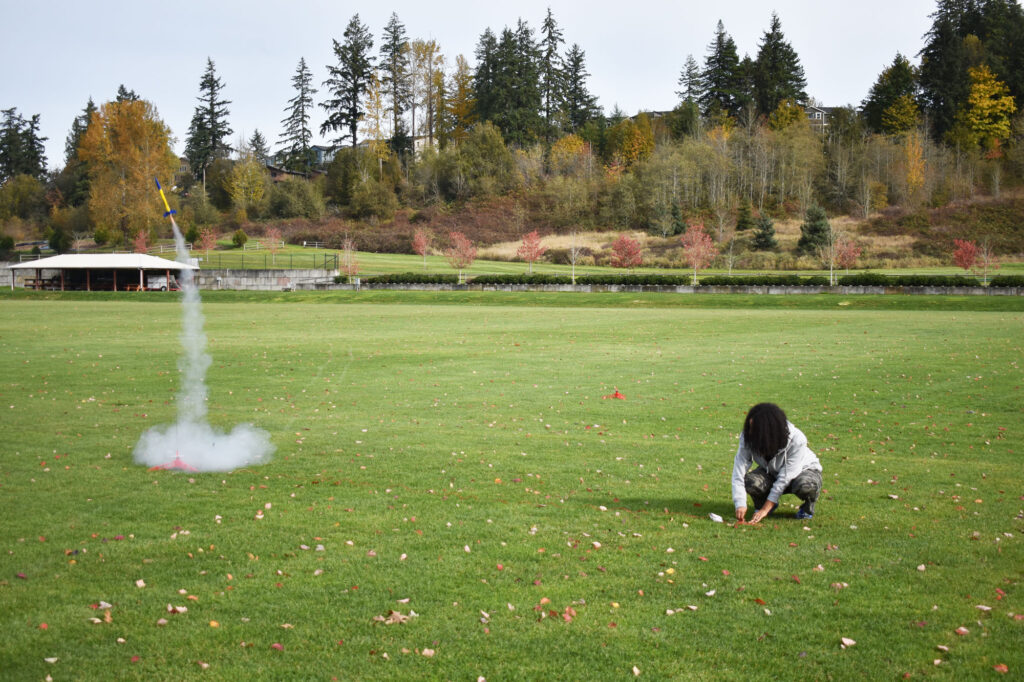
Aiming ever higher
Just like the rockets, Metcalf-Lindenburger hopes her students continue to soar throughout their college career.
“The goal of a Discovery Core class is to help students build fundamental skills for success,” she said. “I am optimistic that the study of space helped students identify their passions and interests, learn how to make observations, write papers and craft arguments, and develop strategies to help them work well with their peers.
“All in all, I would say this has been a successful launch of the class.”
